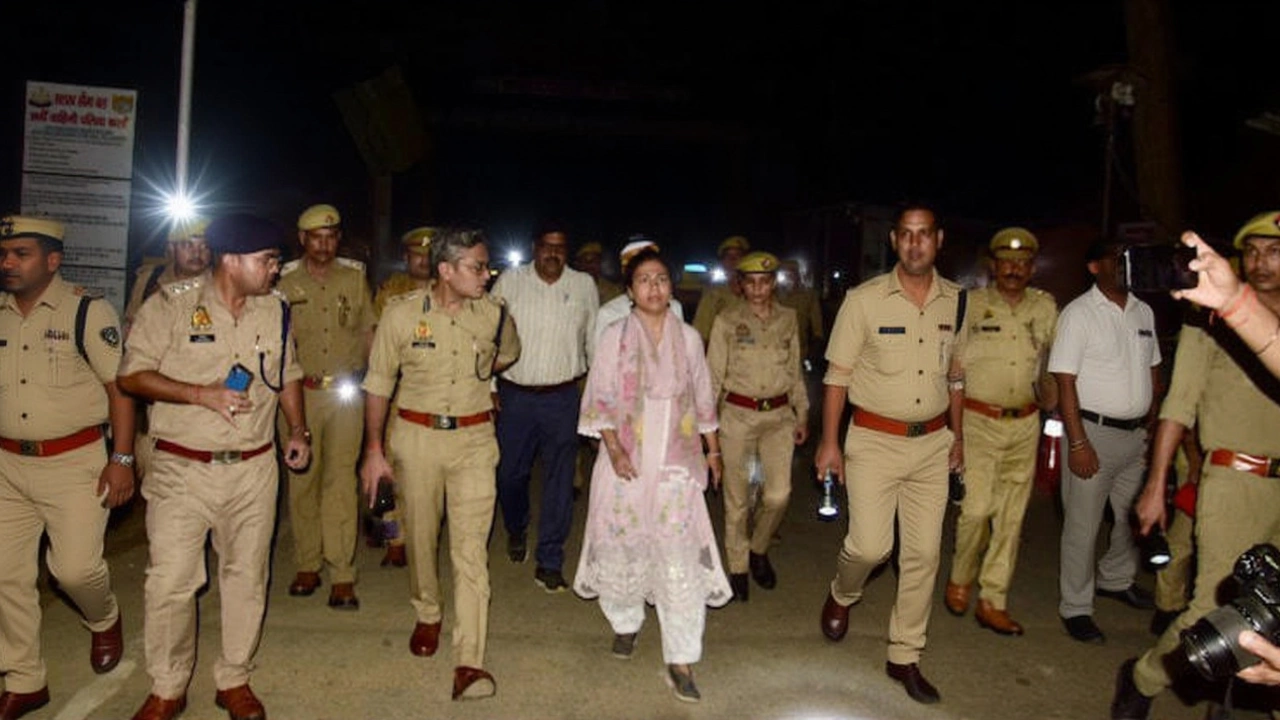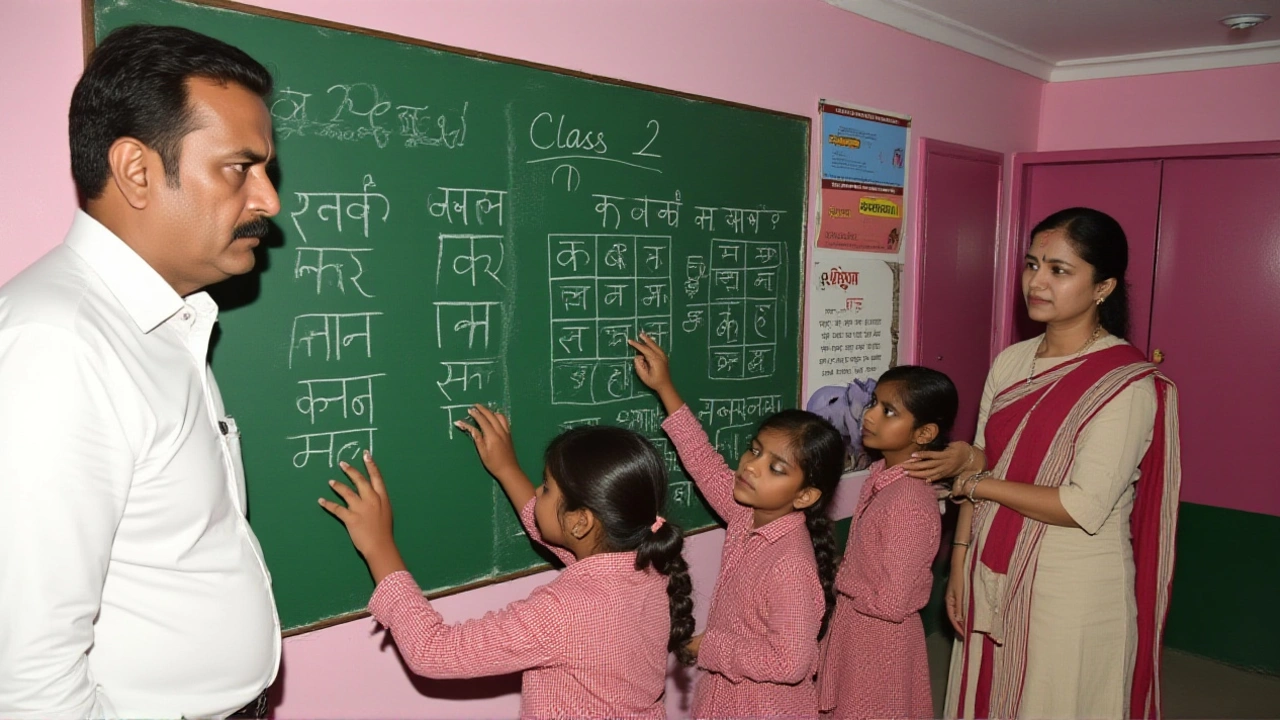
On the night of 12 September 2025, Durga Shakti Nagpal, District Magistrate of Lakhimpur Kheri, Uttar Pradesh walked the Gauriphanta Border alongside Superintendent of Police Sankalp Sharma to assess the spill‑over risk from a sudden flare‑up of violence in Nepal’s Kailali district. The two officials moved on foot, chatting with border‑outpost personnel and checking damaged checkpoints, because the Indian government wanted a \"real‑time\" picture, not just satellite imagery.
Background to the Nepalese Unrest
In the early hours of 12 September, thousands of youths gathered outside the office of Kamal Bahadur Shah, chief minister of Sudur Paschim Province, in the city of Dhangadhi, Kailali district. Protesters shouted anti‑government slogans, then stormed the building, breaking windows and vandalising the chief minister’s car. The unrest quickly spread to the provincial governor’s office and the residence of foreign minister Arzu Rana Deuba, where arson crews reduced furniture and documents to ash.
Even former prime minister and Congress president Sher Bahadur Deuba condemned the arson attacks, calling them \"an attack on Nepal's democratic institutions.\"
Within two hours, the assembly secretariat was also set ablaze, and the provincial police imposed a curfew across the district. Official tallies released by Kailali administration later that day recorded the loss of roughly 600 vehicles and 108 government offices, all reduced to \"charred remains.\"
The trigger remains murky. Some local reports point to a disputed land‑reclamation bill, while opposition leaders allege that the chief minister’s recent \"development package\" sidelined rural constituencies. Whatever the cause, the chaos forced Nepal to seal its internal borders for a brief period, reminiscent of the 2015 post‑earthquake restrictions.
The Gauriphanta Border Patrol
Back in India, Nagpal ordered an immediate foot patrol at the Gauriphanta Border, a relatively low‑traffic crossing that connects Lakhimpur Kheri with Nepal’s Kailali district. The DM’s decision was framed as an border security measure. The patrol team included senior police officers, a handful of Border Security Force troops, and a mobile medical unit.
\"We cannot let the violence spill over our border,\" Nagpal told local reporters as the convoy passed the checkpoint. \"Our priority is to protect residents on both sides and to reassure traders that the gateway will reopen once it is safe.\"
During the patrol, the officials documented several burnt tyre piles, shattered fence posts, and abandoned contraband likely looted from the Nepalese offices. They also verified that the border’s customs market – once bustling with spice traders and textile vendors – remained shut, with shop signs darkened and security lights blinking.
In addition to the on‑ground inspection, the team coordinated with the Border Security Force to tighten electronic surveillance. Drones equipped with thermal cameras were deployed to monitor any movement along the 2‑kilometre stretch that connects the two nations.
Official Responses from India and Nepal
The Indian Ministry of Home Affairs released a brief statement on 13 September, confirming that \"all civilian movement through Gauriphanta is currently limited to residents returning home or those with verified special permits.\" The statement also noted that ID verification and bag checks would be compulsory.
Across the border, the Nepalese Ministry of Foreign Affairs appealed for \"restraint and solidarity,\" urging Indian officials to keep the crossing open for humanitarian aid. However, Kathmandu’s own security forces began a city‑wide sweep, asking citizens to submit photographs and videos of the protests, and warning against buying goods that might have been looted.
On 14 September, as calm began to return to Dhangadhi, Kailali’s chief of police, Vivek Tiwari, told reporters that \"the curfew will be lifted by midnight, and normal traffic will resume by next week.\" Yet he added that \"border checkpoints on both sides will stay on heightened alert for at least another fortnight.\"

Impact on Cross‑Border Trade and Communities
For the thousands of traders who ply the Gauriphanta route daily, the shutdown meant lost earnings of an estimated 3.2 crore rupees (about $380 k) per week, according to the Lakhimpur Kheri Chamber of Commerce. Small‑scale vendors, who rely on the border market for spices, handicrafts, and seasonal produce, reported that perishable goods spoiled within 48 hours of the closure.
Local residents on both sides expressed mixed feelings. \"We understand the security need, but my brother’s shop loses money every day the gate stays shut,\" said Nisha Patel, a resident of the Indian border village of Gauriphanta. \"At the same time, we don’t want the violence to cross into our homes.\"
Human‑rights observers pointed out that restricting movement without clear timelines can exacerbate hardship for families separated by the border. The International Committee for the Red Cross (ICRC) urged both governments to set up a joint \"humanitarian corridor\" for patients and essential goods.
Security Outlook and Next Steps
Security analysts say the rapid foot patrol signals a shift in how Indian authorities handle cross‑border disturbances. \"Usually, the response is limited to a few BSF patrols, but sending the DM and the SP on foot shows a willingness to gather ground‑level intel,\" noted Ramesh Kumar, a senior analyst at the Institute for Strategic Studies, New Delhi.
In the coming days, both nations are expected to negotiate a \"temporary facilitation protocol,\" which could allow limited trade of essential commodities while still enforcing strict ID checks. Meanwhile, the Indian Ministry of External Affairs plans to send a senior diplomat to Kathmandu for a joint review of border‑security procedures.
Even with the curfew lifted, the Gauriphanta crossing will likely remain under a heightened alert status until both sides are satisfied that the situation in Dhangadhi is fully stabilised. For now, the foot patrol stands as a clear reminder that the border, though porous, is still a line of responsibility.
- Key Facts
- Date of Nepal unrest: 12 September 2025
- Vehicles destroyed: ~600
- Government offices burnt: 108
- Border sealed: 12 September 2025
- Patrol led by: Durga Shakti Nagpal (DM) & Sankalp Sharma (SP)
Frequently Asked Questions
Why was the Gauriphanta Border closed after the Nepal protests?
Indian authorities shut the crossing to prevent any spill‑over of violence, to control the flow of looted goods, and to verify the identities of travelers entering a volatile border zone.
How many vehicles and offices were damaged in Dhangadhi?
Official reports put the loss at about 600 vehicles and 108 government offices, many of which were set ablaze during the night‑long protests.
What impact does the border shutdown have on local traders?
Traders risk losing roughly 3.2 crore rupees per week in revenue, with perishable goods spoiling quickly and cross‑border supply chains stalled.
When is the border expected to reopen fully?
Officials estimate a phased reopening by late September, contingent on security assessments and a joint India‑Nepal protocol that would allow limited trade under strict ID checks.
What measures are being taken to ensure future border security?
The DM’s foot patrol has prompted increased drone surveillance, tighter BSF checkpoints, and plans for a joint India‑Nepal \"humanitarian corridor\" to manage essential movement while maintaining security.